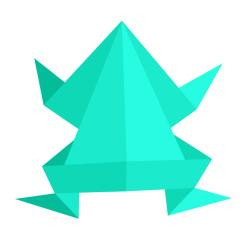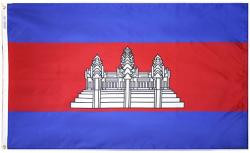Lindsay Clark's collections
Cambodian New Year
<p><strong><u>Cambodian New Year</u></strong> (<a href="https://en.wikipedia.org/wiki/Khmer_language" target="_blank">Khmer</a>: បុណ្យចូលឆ្នាំថ្មី) or <strong>Choul Chnam Thmey</strong> in the <a href="https://en.wikipedia.org/wiki/Khmer_language" target="_blank">Khmer language</a>, literally "Enter New Year", is the name of the <a href="https://en.wikipedia.org/wiki/Cambodia" target="_blank">Cambodian</a> holiday that celebrates the traditional Lunar New Year. The holiday lasts for three days beginning on NewYear's Day, which usually falls on April 13th or 14th, which is the end of the harvesting season, when farmers enjoy the fruits of their labor before the rainy season begins.</p>
<p>Cambodians also use Buddhist Era to count the year based on the <a href="https://en.wikipedia.org/wiki/Buddhist_calendar" target="_blank">Buddhist calendar</a>.<br /> <strong><em>Maha Sangkran</em></strong>, derived from <a href="https://en.wikipedia.org/wiki/Sanskrit" target="_blank">Sanskrit</a> <em>Maha </em><a href="https://en.wikipedia.org/w/index.php?title=Sangkranta&action=edit&redlink=1" target="_blank"><em>Sangkranta</em></a>, is the name of the first day of the new year celebration. It is the end of the year and the beginning of a new one. People dress up and light candles and burn incense sticks at shrines, where the members of each family pay homage to offer thanks for the <a href="https://en.wikipedia.org/wiki/Buddha" target="_blank">Buddha</a>'s teachings by bowing, kneeling and prostrating themselves three times before his image. For good luck, people wash their face with holy water in the morning, their chests at noon, and their feet in the evening before they go to bed<strong>.</strong></p>
<p> <strong><em>Vireak Vanaba</em></strong><strong><em>t</em></strong> is the name of the second day of the new year celebration. People contribute charity to the less fortunate by helping the poor, servants, homeless, and low-income families. Families attend a dedication ceremony to their ancestors at monasteries.</p>
<p><strong><em> T'ngai Loeng Sak</em></strong> in Khmer is the name of the third day of the new year celebration. Buddhists wash the Buddha statues and their elders with perfumed water. Bathing the Buddha images is a symbolic practice to wash bad actions away like water clean dirt from household items. It is also thought to be a kind deed that will bring longevity, good luck, happiness and prosperity in life. By washing their grandparents and parents, the children can obtain from them best wishes and good pieces of advice to live the life for the rest of the year.</p>
<p>#APA2018 #TCSLowell</p>
 Lindsay Clark
Lindsay Clark
29


